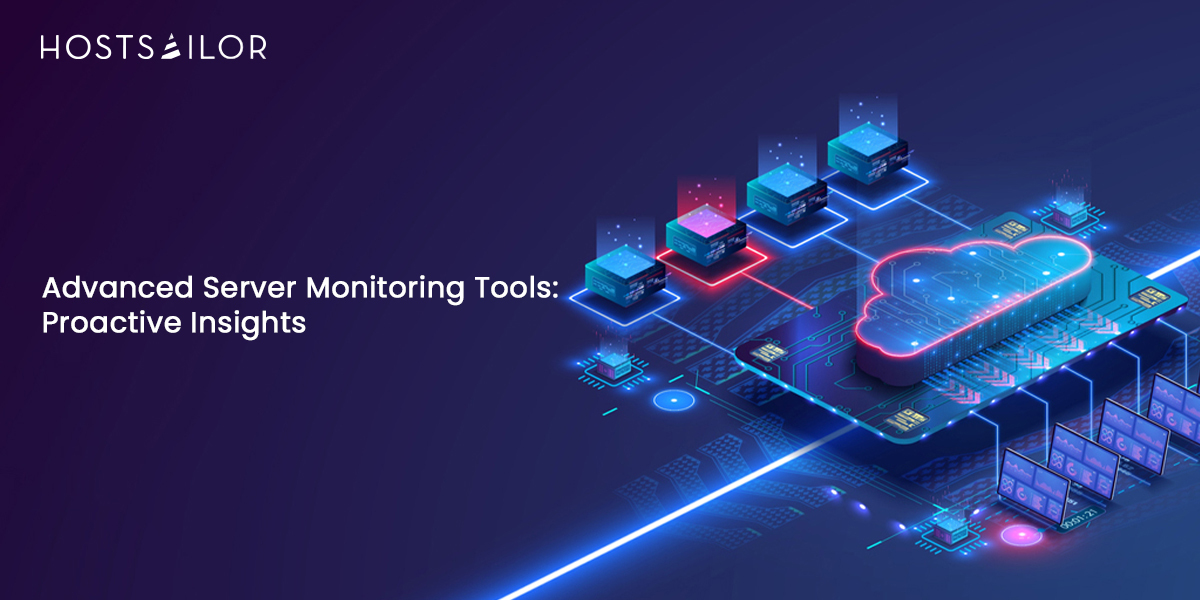
In today’s digital landscape, where every second counts, ensuring the smooth operation of your servers is paramount. Imagine your website crashing during peak hours—customers are frustrated, sales plummeting, and your reputation taking a hit.

Enter advanced server monitoring tools, and your proactive allies in maintaining optimal performance and preempting potential issues before they escalate. In this article, we’ll delve into the realm of advanced server monitoring tools, exploring their significance, features, and how they empower businesses to stay ahead of the curve.
Why Server Monitoring Matters
Server monitoring is akin to having a vigilant guardian overseeing the health and performance of your servers around the clock. It involves tracking various metrics such as CPU usage, memory consumption, disk space, and network traffic to detect anomalies and potential bottlenecks. But why does it matter?
Prevent Downtime
Downtime is the bane of online businesses, leading to revenue loss, decreased productivity, and disgruntled users. By promptly identifying issues and proactively addressing them, server monitoring tools help minimize downtime and keep your operations running smoothly.
Enhance Performance
Optimal server performance is essential for delivering a seamless user experience. With real-time insights provided by monitoring tools, you can fine-tune your server configurations, allocate resources efficiently, and ensure optimal performance even during peak traffic periods.
Improve Security
In today’s cybersecurity landscape, the threat of cyber attacks looms large. Server monitoring tools play a crucial role in identifying suspicious activities, detecting unauthorized access attempts, and safeguarding your sensitive data from potential breaches.
Advanced Features of Server Monitoring Tools
Predictive Analytics
Gone are the days of reactive troubleshooting. Advanced server monitoring tools leverage predictive analytics to forecast potential issues based on historical data patterns. By anticipating problems before they occur, you can take preemptive measures to mitigate risks and maintain uninterrupted operations.
Automated Remediation
Manual intervention can be time-consuming and prone to human error. With automated remediation capabilities, server monitoring tools can automatically execute predefined actions in response to detected issues, such as restarting services, reallocating resources, or scaling infrastructure, ensuring swift resolution without human intervention.
Custom Alerts and Notifications
Not all server events are created equal. Advanced monitoring tools allow you to set custom thresholds and triggers for alerts and notifications, ensuring that you’re only notified about significant incidents that require attention. Whether it’s CPU utilization exceeding a certain threshold or a critical service failure, you’ll be promptly informed, enabling timely intervention.
Choosing the Right Server Monitoring Tool
Scalability and Flexibility
Cloud Compatibility
In today’s cloud-centric environment, compatibility with cloud platforms is essential. Look for server monitoring tools that seamlessly integrate with popular cloud providers like AWS, Azure, and Google Cloud, allowing you to monitor both on-premises and cloud-based infrastructure from a unified dashboard.
Scalability
Your business is not static, and neither are your server monitoring needs. Choose a tool that can scale alongside your business, accommodating growth without compromising performance or increasing complexity. Whether you’re a startup with modest infrastructure or a large enterprise with a sprawling network, scalability is key.
Ease of Use and Deployment
Intuitive Interface
Server monitoring shouldn’t require a steep learning curve. Opt for tools with an intuitive interface and user-friendly dashboards that provide actionable insights at a glance. A well-designed interface can streamline your workflow, allowing you to focus on addressing issues rather than navigating complex menus.
Quick Deployment
Time is of the essence when it comes to server monitoring. Choose tools that offer quick and straightforward deployment options, whether it’s through agent-based installations, containerized deployments, or cloud-based solutions. Minimizing deployment overhead allows you to start monitoring your infrastructure with minimal delay.
Conclusion
In the fast-paced world of IT operations, proactive insights are the cornerstone of effective server management. Advanced server monitoring tools empower businesses to anticipate, identify, and address potential issues before they impact operations, ensuring uninterrupted service delivery, optimal performance, and enhanced security.
By choosing the right tool equipped with advanced features and scalability, businesses can stay ahead of the curve and maintain a competitive edge in today’s digital landscape.
FAQs
- What is the difference between proactive and reactive server monitoring?
Proactive server monitoring involves actively monitoring server performance to anticipate and address issues before they escalate, while reactive monitoring involves responding to issues after they have already occurred.
- Can advanced server monitoring tools integrate with other IT management systems?
Yes, many advanced server monitoring tools offer integrations with other IT management systems such as ticketing systems, configuration management tools, and orchestration platforms.
- How often should server monitoring be performed?
Server monitoring should ideally be performed continuously to ensure real-time visibility into server performance. However, the frequency of monitoring can vary depending on the specific needs and requirements of the business.
- Are advanced server monitoring tools suitable for small businesses?
Yes, advanced server monitoring tools can be beneficial for businesses of all sizes, as they help ensure the smooth operation of servers and minimize downtime, regardless of the scale of the infrastructure.
- Can advanced server monitoring tools help with compliance requirements?
Yes, many advanced server monitoring tools offer features to help businesses meet compliance requirements by providing audit trails, reporting capabilities, and security monitoring functionalities.